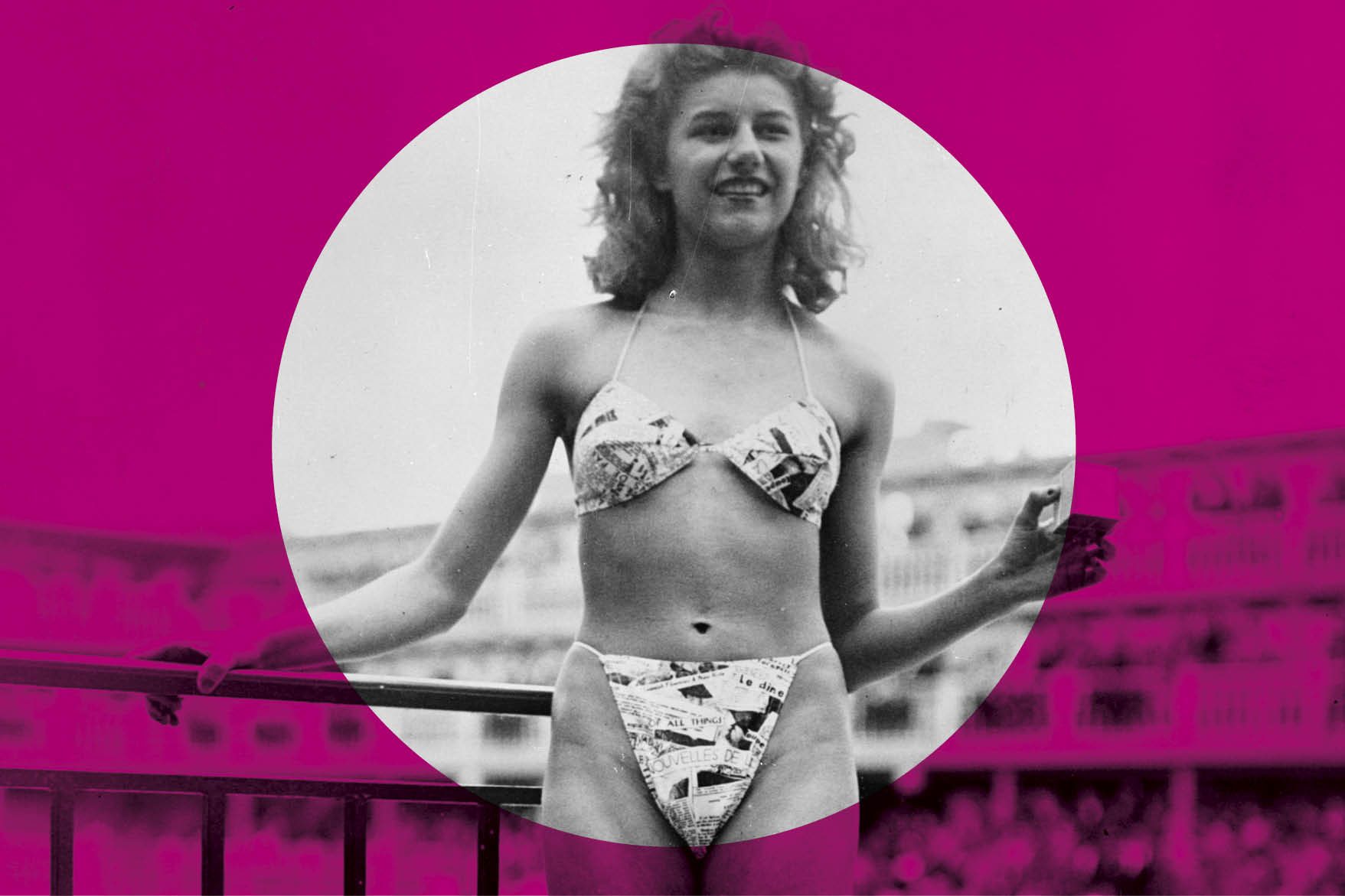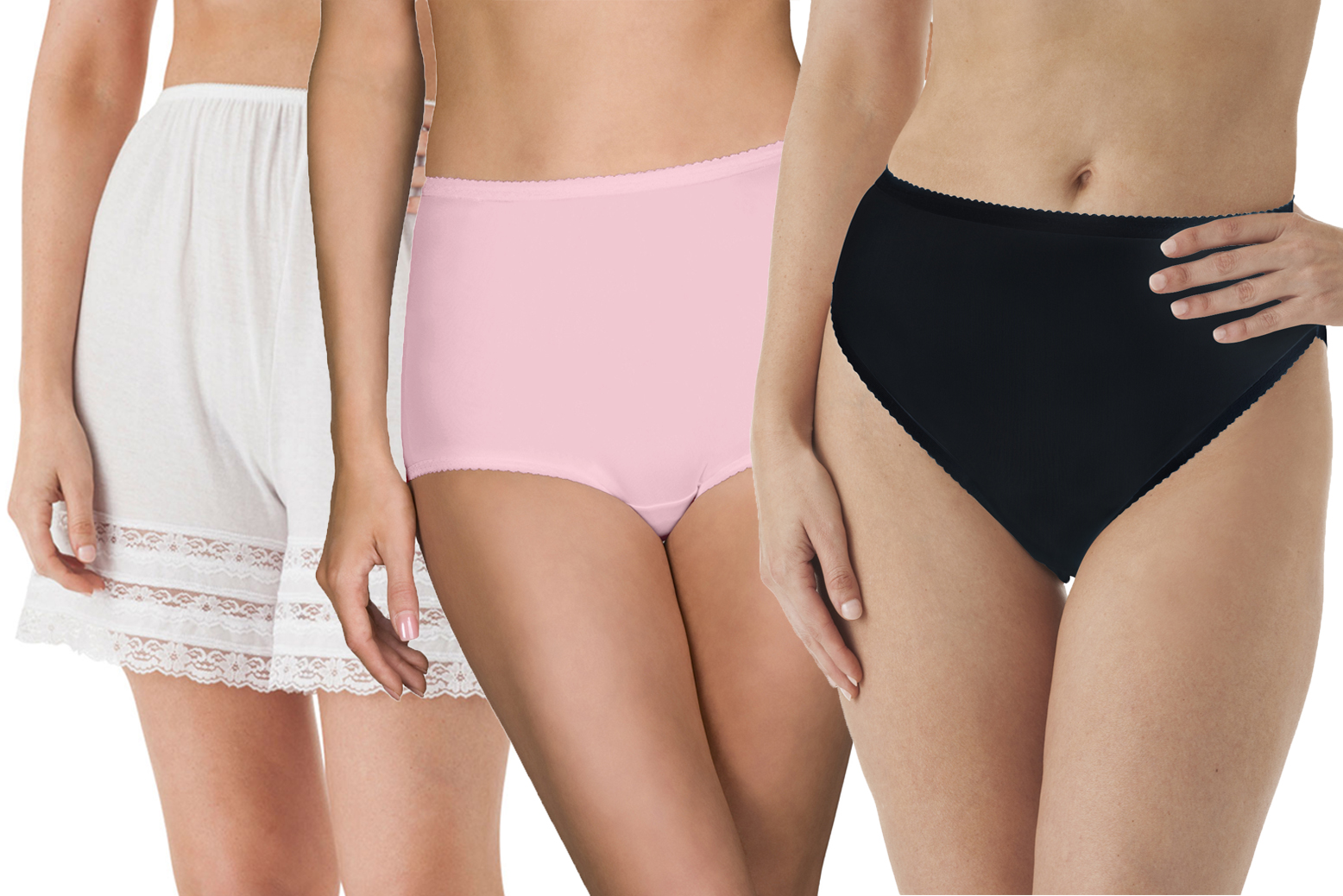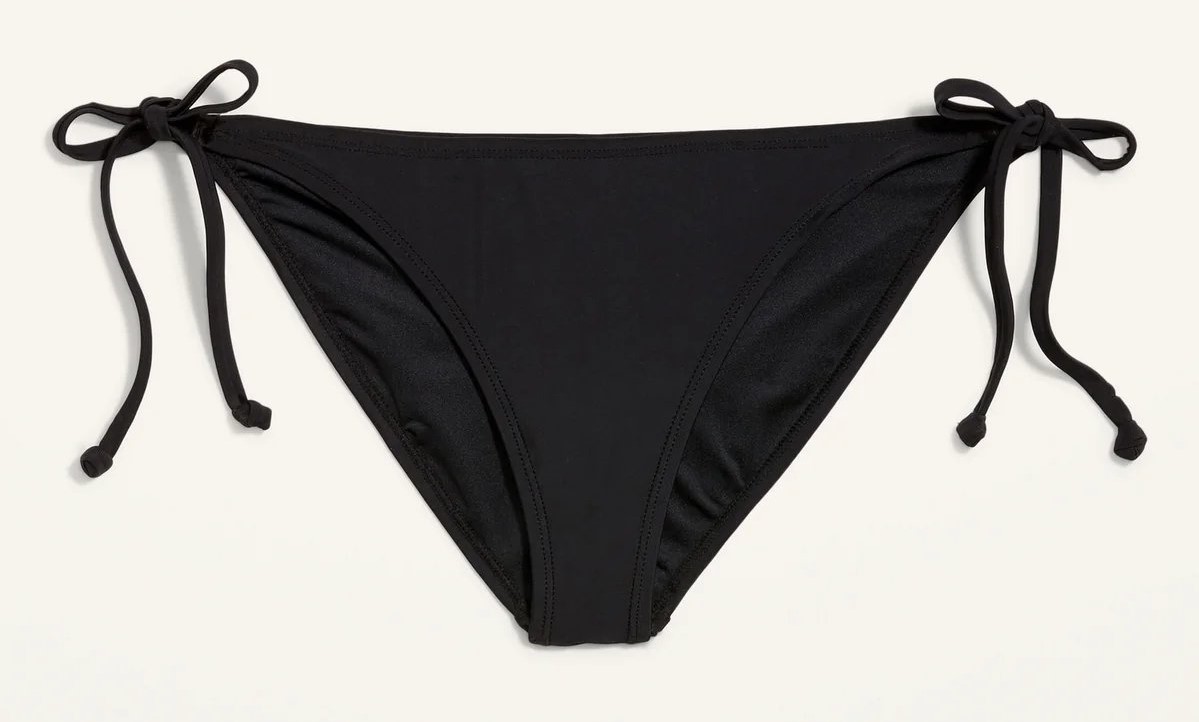Home>Women's Underwear>Bikinis>In What Year Was The Bikini Invented?


Bikinis
In What Year Was The Bikini Invented?
Modified: September 23, 2023
Discover the intriguing history of bikinis - learn when this iconic swimwear was first invented and how it revolutionized beach fashion.
(Many of the links in this article redirect to a specific reviewed product. Your purchase of these products through affiliate links helps to generate commission for Under-tec.com, at no extra cost. Learn more)
Table of Contents
Introduction
The bikini is a staple in beach fashion, representing a sense of freedom and confidence. Its popularity has only grown over the years, as it has become a symbol of empowerment and style.
Invented more than 70 years ago, the bikini has come a long way from its humble beginnings. It has evolved into a fashion statement that transcends borders, cultures, and body types. Whether you’re lounging by the pool, strolling along sandy shores, or catching some waves, the bikini is the go-to choice for summertime fun.
This article delves into the fascinating history of the bikini, from its early prototypes to the present-day trends. We will explore the inventor behind the iconic swimwear, the reaction it garnered upon its introduction, and its lasting impact on fashion and popular culture.
So, grab your sunscreen and put on your shades as we dive into the captivating world of bikinis!
Early Examples of Swimwear
Before the bikini revolutionized beach fashion, there were a variety of swimwear styles that spanned centuries. In ancient times, both men and women would swim nude or wear minimal clothing, often consisting of loincloths or simple cloth wraps.
As societal norms and modesty standards evolved, swimwear began to cover more of the body. During the 18th and 19th centuries, women typically wore bathing dresses, which were long, loose garments made of heavy fabric. These dresses were often paired with bloomers or drawers underneath for added coverage.
In the early 20th century, swimwear became more functional and practical. One-piece bathing suits made their debut, providing women with more freedom of movement. These suits featured higher necklines, knee-length skirts, and sometimes even sleeves.
It wasn’t until the mid-1940s that two-piece swimwear started to gain traction. These early versions of the bikini were still relatively modest, with high-waisted bottoms and halter-style tops that covered the navel. However, compared to the one-piece suits of the time, they were considered quite daring.
Designers like Jacques Heim and Louis Réard played a crucial role in pushing the boundaries of swimwear. They introduced new styles that revealed more skin and challenged societal norms. Little did they know that their creations would eventually pave the way for the bikini as we know it today.
Stay tuned as we delve deeper into the journey of the bikini, exploring the visionary designer who took swimwear to a whole new level.
The Inventor of the Modern Bikini
The modern bikini, as we know it today, can be credited to two daring individuals: French designers Jacques Heim and Louis Réard. Each had their own take on this revolutionary swimwear style.
Jacques Heim, a renowned fashion designer, introduced the “Atome” in 1946. This two-piece swimsuit featured a midriff-baring top and high-waisted briefs, which were still relatively modest compared to later designs. While Heim’s “Atome” gained attention, it was Louis Réard’s creation that truly made waves.
In 1946, Louis Réard unveiled his daring design, which he simply called the “bikini.” This name was inspired by the Bikini Atoll in the Pacific Ocean, where nuclear testing was taking place. Réard believed that his new creation would be just as explosive and shocking to the world of fashion.
Réard’s bikini consisted of a tiny bralette top and a revealing bottom, designed to showcase the female figure. It exposed the navel, a feature that hadn’t been seen in swimwear before. The bikini pushed the boundaries of what was considered acceptable, and its debut sent shockwaves through the fashion industry.
While Jacques Heim and Louis Réard both played significant roles in the creation of the modern bikini, it was Réard’s boldness and innovative design that captured the world’s attention. The bikini quickly became a symbol of liberation and individuality, breaking free from the constraints of traditional swimwear.
Next, we delve into the grand unveiling of the bikini to the world and the reactions it sparked.
Unveiling the Bikini to the World
When Louis Réard introduced the bikini in 1946, he knew he had created something revolutionary. To make a splash and generate attention, Réard decided to reveal his bold creation at the Piscine Molitor, a popular public pool in Paris.
On July 5, 1946, the world got its first glimpse of the bikini when model Micheline Bernardini confidently strutted down the runway in Réard’s creation. The bikini caused an immediate stir, with shocked gasps and awestruck applause from the audience.
The daring design of the bikini sparked discussions about morality, decency, and the role of women in society. Many considered it scandalous and inappropriate, going against the conservative norms of the time. Some countries even banned the bikini outright, viewing it as a threat to public decency.
Despite the controversy, the bikini continued to gain popularity and notoriety. Hollywood played a significant role in its mainstream acceptance. Glamorous actresses such as Brigitte Bardot and Marilyn Monroe donned bikinis on screen, further solidifying its place in popular culture.
The bikini became synonymous with confidence, beauty, and a carefree spirit. It represented a shift in societal norms, empowering women to embrace their bodies and celebrate their individuality.
As time passed, the bikini evolved to include various styles, such as the string bikini, bandeau bikini, and high-waisted bikini. Designers embraced the versatility of the bikini, experimenting with different fabrics, colors, and patterns.
In the next section, we explore the reaction and controversy surrounding the bikini and how it has influenced fashion and popular culture over the years.
Reaction and Controversy Surrounding the Bikini
The unveiling of the bikini in 1946 sparked widespread controversy and debate. The revealing nature of this new swimwear style challenged societal norms and faced strong opposition from conservative voices. Critics argued that the bikini was indecent and promoted immorality.
Several countries banned the bikini, deeming it too scandalous for public display. It wasn’t until the 1960s that these bans were lifted, as changing attitudes and the growing influence of the women’s liberation movement pushed for greater freedom of choice and expression.
Despite the backlash, the popularity of the bikini continued to grow. Women embraced this new form of swimwear as a symbol of liberation and empowerment. They saw it as a way to celebrate their bodies and challenge the traditional notions of modesty.
In fashion, the bikini quickly became a staple on runways and magazine covers. It revolutionized beachwear and influenced the way designers approached swimwear design. The bikini’s impact extended beyond the beach, permeating popular culture and media.
The bikini became associated with iconic moments in film and music. Stars like Ursula Andress emerging from the ocean in a white bikini in the James Bond film “Dr. No” and the infamous bikini-clad scene in the movie “Fast Times at Ridgemont High” further solidified its place in the collective consciousness.
Over time, the bikini has undergone countless variations, catering to different body types and style preferences. From high-waisted bottoms and bandeau tops to thong bikinis and one-shoulder designs, the bikini continues to evolve and adapt to changing trends.
While controversy and debates surrounding the bikini have diminished over the years, it still holds a special place in the fashion world. It remains a symbol of confidence, body positivity, and the freedom to express oneself.
Next, we explore the lasting influence of the bikini on fashion and popular culture.
The Bikini’s Influence on Fashion and Popular Culture
The bikini’s impact on fashion and popular culture cannot be overstated. It has shaped trends, redefined beauty standards, and empowered individuals to embrace their bodies. The bikini has become more than just swimwear; it has become a symbol of freedom, confidence, and self-expression.
In the world of fashion, the bikini has served as a catalyst for innovative design. It has inspired designers to push boundaries and experiment with new cuts, fabrics, and embellishments. From bold prints and vibrant colors to intricate detailing and unique silhouettes, the bikini has evolved into an art form.
The bikini has also played a significant role in challenging traditional beauty standards. It celebrates diversity by embracing different body types and promoting body positivity. The once-perceived “ideal” beach body has given way to a more inclusive and accepting attitude, encouraging people to feel comfortable and proud of their unique selves.
Popular culture has been deeply influenced by the bikini as well. From music to movies, the bikini has become an iconic symbol of sex appeal and allure. It has been featured prominently in music videos, with artists like Beyoncé, Rihanna, and Katy Perry donning bikinis in their visuals, further cementing its status as a cultural phenomenon.
Advertisements, magazines, and social media often showcase the bikini as a symbol of aspiration and lifestyle. It represents the carefree spirit of summer, destinations near and far, and the promise of relaxation and fun. The bikini has become a must-have item for vacations and a statement of personal style.
Furthermore, the bikini has influenced the rise of swimwear as a standalone fashion category. Swimwear fashion shows and dedicated swimwear brands have emerged, solidifying the bikini as a cornerstone of fashion industry events and collections.
Through its influence on fashion and popular culture, the bikini has transcended generations, maintaining its status as a timeless and iconic piece of clothing. It continues to make a statement, inspire confidence, and symbolize the beauty of embracing one’s body.
Now, let’s explore the modern-day trends and innovations that keep the bikini at the forefront of beach fashion.
Modern-Day Bikini Trends
As fashion evolves, so do bikini trends. Modern-day bikinis come in a wide array of styles, catering to different preferences and body types. Let’s explore some of the popular trends that have emerged in recent years.
1. High-Waisted Bikinis: Inspired by the retro fashion of the past, high-waisted bikinis have made a comeback. These bottoms sit above the belly button, providing a flattering and comfortable fit. They offer more coverage and can help accentuate the waistline, making them a popular choice for those seeking a retro or modest look.
2. Cut-Outs and Strappy Detailing: Cut-outs and strappy detailing have become popular embellishments in modern bikini designs. Whether it’s a simple side cut-out or a complex web of straps, these details add an element of intrigue and create visually stunning silhouettes.
3. Sporty and Active Styles: With the rise of athleisure, sporty and active-style bikinis have gained popularity. These bikinis offer more support and coverage, making them ideal for women who engage in water activities or sports. They often feature racerback tops, high-necklines, and durable fabrics.
4. Sustainable and Eco-friendly Materials: With a growing emphasis on sustainability, many swimwear brands are turning to eco-friendly materials. Bikinis made from recycled plastics, organic cotton, and other sustainable fabrics are becoming more readily available, allowing individuals to make environmentally conscious choices without compromising on style.
5. Mix and Match: One of the trends that have gained momentum in recent years is mixing and matching bikini tops and bottoms. This allows for more individuality and creativity in creating unique bikini sets. Whether it’s contrasting colors, patterns, or styles, mix and match sets offer endless possibilities for personal expression.
6. Bold Prints and Patterns: Vibrant prints and patterns continue to be a popular choice in bikini design. From tropical florals and animal prints to geometric patterns and abstract designs, bold prints are a way to make a statement and stand out on the beach or by the pool.
It’s important to note that while trends come and go, the most important aspect of choosing a bikini is finding one that makes you feel confident and comfortable in your own skin. Whether you prefer a classic style or want to experiment with the latest trends, the key is to embrace your unique style and rock it with self-assurance.
As we conclude our exploration of modern-day bikini trends, it’s clear that this iconic swimwear piece continues to evolve, adapt, and influence the world of fashion.
Conclusion
The bikini has come a long way since its inception more than 70 years ago. From its early prototypes to the modern-day trends, the bikini has become an integral part of beach fashion and popular culture. It has challenged societal norms, redefined beauty standards, and empowered individuals to embrace their bodies.
Early examples of swimwear paved the way for the bikini, with designers like Jacques Heim and Louis Réard pushing boundaries and introducing new styles. The unveiling of the bikini to the world sparked controversy and debates, but its popularity continued to rise. The bikini’s influence on fashion and popular culture cannot be overlooked.
The bikini has influenced the way designers approach swimwear, inspiring innovative designs and diverse styles. It has helped challenge traditional beauty standards, promoting body positivity and inclusivity. From its appearances in movies and music videos to its representation in advertisements and media, the bikini has become an iconic symbol of sex appeal, allure, and freedom.
Modern-day bikini trends reflect the evolving nature of fashion, catering to various preferences and body types. Whether it’s the resurgence of high-waisted styles, the incorporation of sustainable materials, or the mix and match trend, bikinis offer endless possibilities for self-expression.
In the end, the most important aspect of choosing a bikini is finding one that makes you feel confident and comfortable. Embrace your unique style, celebrate your body, and enjoy the freedom that the bikini represents.
So, the next time you slip into a bikini and head to the beach or pool, remember the rich history and the journey that this iconic swimwear piece has taken. The bikini is not just a piece of clothing – it’s a symbol of empowerment, beauty, and the joy of summer.










